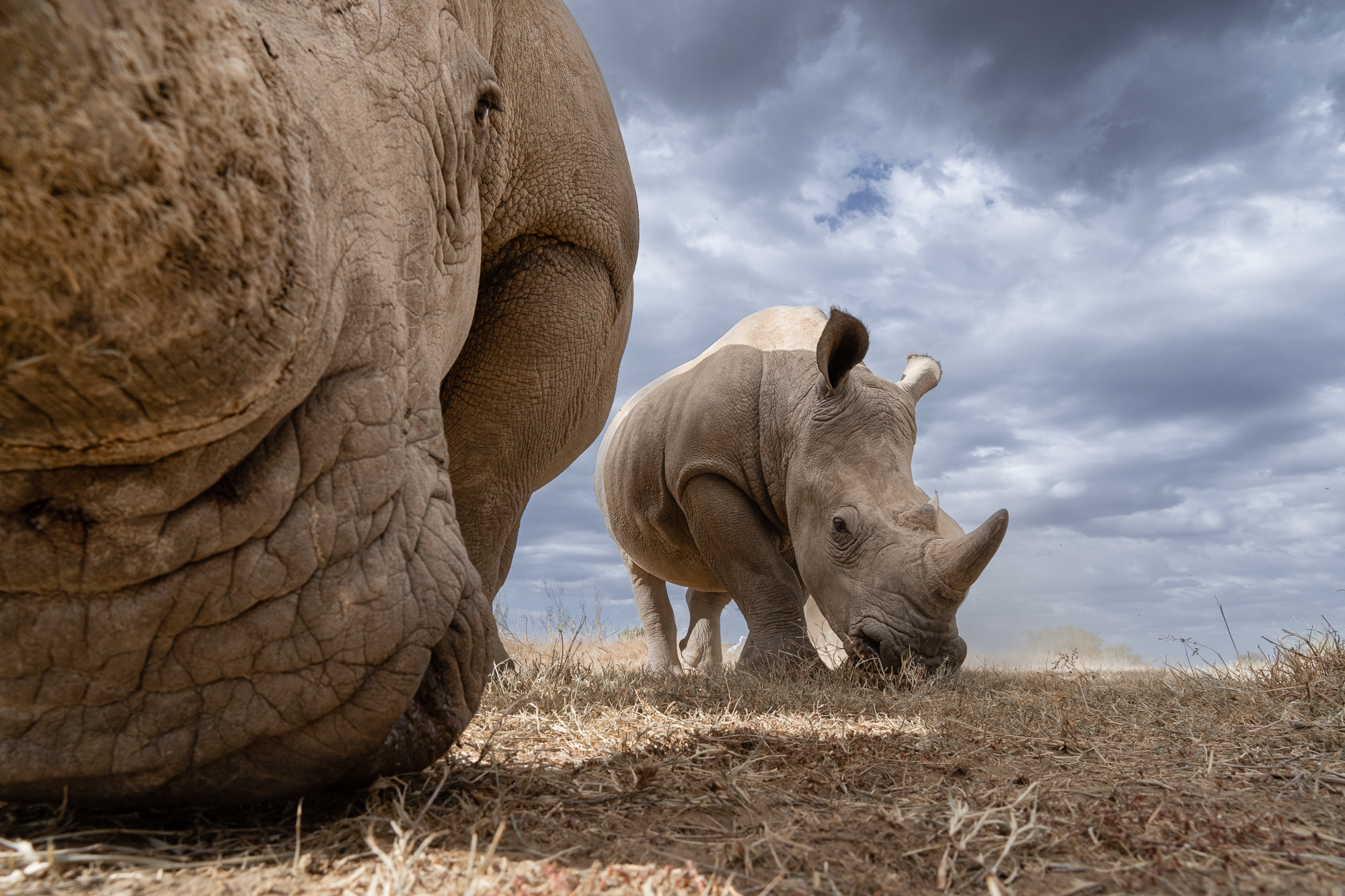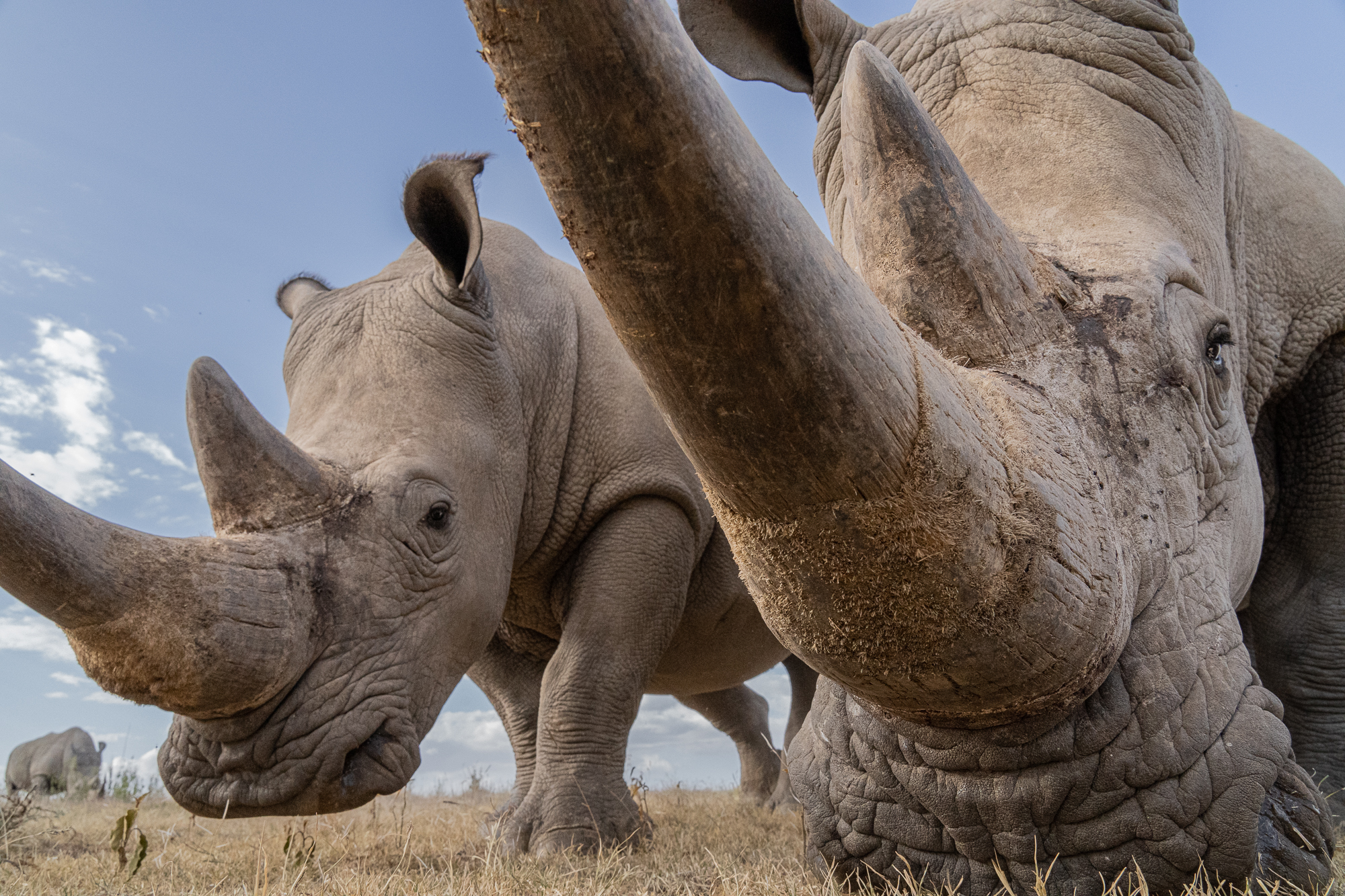
This is a quick one but I’ve had some questions about the way I photograph bears and rhinos so close without frightening the animals or jeopardizing my own safety, so I’m posting this as a place to direct people interested in this. Please don’t read this as a review or an endorsement, just a guy telling you what’s working for me right now.
I’ve been playing a lot recently with remotely controlled cameras. These aren’t camera traps or trail cams which you set once and which trigger themselves, but rather they are cameras triggered by me from a distance, which is a good idea if you want to photograph a bear with a 16mm lens from a foot or two away.
If you look at the picture above you can see a bear not doing what she was asked to do. You can also see two cameras, one is mine and the other belongs to my friend Jon. The camera sits on a motorized tripod head. On top of the camera itself is a CamRanger2 remote with two little antennae, connected to the camera with USB cords, and to my iPhone or iPad with its own wifi signal. Both the remote-control tripod head and the remote trigger are made and sold by CamRanger here.
Once set up and connected to the iPhone or iPad I can see my composition, change my focus points, camera settings like shutter, aperture, ISO, EV compensation etc. And with the motorized tripod head I can pan and tilt. The only things I really can’t do are level the tripod or zoom the lens (cameras with power zoom would, I assume, allow you to zoom, but don’t quote me on that). Here’s what I can see on my iPhone screen:

With this set-up a camera can be placed well ahead of an approaching bear, usually around a corner so our presence doesn’t disturb them, and then we’re back into the boat and back into the middle of the river, about 100 feet or 35 meters away, before the bear approaches (the range of the CamRanger2 is reported as 500ft / 130m).






The CamRanger2 is a bit fussy to get set-up initially, or it was for me, but when I ran into problems the folks who support it were very responsive and got me turned right side up. There are settings within each individual camera that need tweaking and it took me a while to get those set correctly. Overall it’s the best solution I’ve found for remote stuff where I want to see what’s going on through the lens, and want full control. Now that I’ve used it a while it has my confidence.

The tripod I’m using is a Really Right Stuff Versa Ground Pod, and while almost any tripod would work I like this one for the very compact size and it’s still super stable, which is important when you’re trusting a grizzly bear not to knock your camera into the water. So far I’ve had no issues, even though the occasional bear decides to give herself a bit of a scratch on the camera.
Am I worried about losing the gear in the water? Not really. So far I’ve had no incidents. And the rhinos I’ve photographed don’t seem much of a threat. So far nothing has crushed the set up (or even tried) and the fabricated aluminum cage I was using last year (see the picture) just doesn’t seem necessary and is kind of bulky and hard to level, so I replaced it with a tripod this year.
If I were to do it again, I’d probably skip the motorized head. It works well, and from the same app I control the camera with, and it’s not super expensive (USD$250) but it moves quite slowly and for what I’m doing the bear is long gone by the time I’ve realized it’s not going straight to the camera and I want to change the way the camera is facing. And I’ve got to make sure that tripod head is really level or panning just gives me a really wonky horizon. It’s a great head and I’m sure others would find real-world application for it, but I think I might travel without it next time.
One more thing. I’ve been using my CamRanger2 with an iPhone. My friend Jon uses his with an iPad Mini and he gets better range than I do because there’s a bigger antenna in the iPad. It’s also easier to see everything on a larger screen, but it works just fine with the phone.
If this all makes me seem like a smarty pants, it’s because I’ve got friends much more clever than I am and who figure out the technical stuff with greater grace than I can. Jon McCormack gets the credit for the refinements to this set-up.
Hope this helps. Happy to answer questions; if you’ve got them, leave them in comments.
For the Love of the Photograph,
David.

